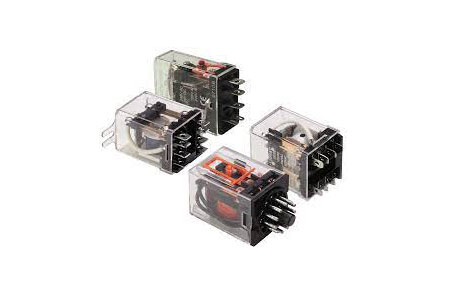Key Takeaway
An SPST relay, or Single-Pole Single-Throw relay, is a basic type of relay. It has one input (pole) and one output (throw). This relay operates like a simple on-off switch, either opening or closing a circuit. The coil in an SPST relay typically draws 150-200 mA of current with a coil resistance of about 60-80 ohms. You can test the relay using a multimeter. If the resistance is too high or shows an open circuit, it might mean the coil is damaged. SPST relays are widely used in simple electronic and electrical systems for reliable control.
Understanding Relay Coil Current Draw
The current draw of a relay coil, also known as coil current, is the amount of electrical current required to energize the relay’s coil and activate its contacts. This current creates a magnetic field that moves the armature, closing or opening the relay contacts. The coil current is essential for the relay to function correctly, and understanding its characteristics is vital for proper relay selection and circuit design.
Coil current is typically specified by the manufacturer and depends on the relay’s voltage rating and coil resistance. The relationship between these parameters is governed by Ohm’s Law (I = V/R), where I is the current, V is the voltage, and R is the resistance. Accurate knowledge of coil current helps in ensuring that the power supply and circuit components are appropriately rated to handle the relay’s demands.

Factors Affecting Coil Current
Several factors influence the current draw of a relay coil, including coil voltage, resistance, and the relay’s design.
Coil Voltage: The voltage applied to the relay coil directly affects the current draw. Higher voltages increase the current, provided the coil resistance remains constant.
Coil Resistance: The inherent resistance of the coil determines how much current will flow for a given voltage. Lower resistance coils draw more current.
Relay Design: Different relay designs have varying current requirements. For instance, latching relays, which hold their position after being actuated, might have different current characteristics compared to non-latching relays.
Temperature: Changes in temperature can affect the resistance of the coil, thereby altering the current draw. High temperatures generally increase resistance, reducing the current.
Understanding these factors helps in predicting the coil current accurately and designing circuits that can accommodate these variations without compromising performance.
You May Like to Read
Typical Current Ratings for Various Relays
Relay coils come in various current ratings, depending on their application and design.
Low-Current Relays: These typically draw currents in the range of 10 to 50 milliamps (mA). They are used in low-power applications, such as signal switching in electronics.
Medium-Current Relays: These draw between 50 to 200 mA and are common in automotive and industrial control systems.
High-Current Relays: Used in heavy-duty applications, these relays can draw currents upwards of 200 mA to several amps. They are found in power distribution and high-power motor control systems.
Knowing the typical current ratings helps in selecting the appropriate relay for your specific application, ensuring that the relay can handle the required current without overheating or failing.
Measuring Coil Current Draw
Measuring the coil current draw is a straightforward process that can be performed using a multimeter.
Disconnect the Relay: Ensure the relay is disconnected from the circuit to avoid any potential damage.
Set the Multimeter: Set your multimeter to measure current (usually denoted as A or mA).
Connect the Multimeter in Series: Connect the multimeter leads in series with the relay coil. This means one lead goes to the power supply and the other to one terminal of the coil.
Energize the Coil: Apply the rated voltage to the coil and observe the current reading on the multimeter.
This measurement provides an accurate value of the coil current, helping you verify that it matches the relay’s specifications and the circuit’s design parameters.
Implications for Circuit Design
Understanding the current draw of a relay coil has several implications for circuit design:
Power Supply Requirements: Ensure the power supply can provide the necessary current without significant voltage drops.
Component Ratings: Other components in the circuit, such as transistors or drivers, must be rated to handle the relay coil’s current.
Thermal Management: Higher current draw can lead to increased heat generation. Proper heat dissipation methods, such as heat sinks or ventilation, should be incorporated.
Circuit Protection: Implement fuses or current-limiting devices to protect the circuit from overcurrent conditions, ensuring safe operation.
Considering these factors during the design phase ensures that your circuit can support the relay’s operation reliably and efficiently.
Conclusion
Understanding how many amps a relay coil draws is essential for designing robust and efficient electrical systems. By comprehending the factors affecting coil current, typical current ratings, and proper measurement techniques, you can ensure that your circuits are well-equipped to handle the demands of the relay. This knowledge not only enhances the reliability and performance of your designs but also contributes to the overall safety and longevity of the electrical systems you work on. Embrace this foundational understanding to build more effective and reliable solutions in your engineering career.
